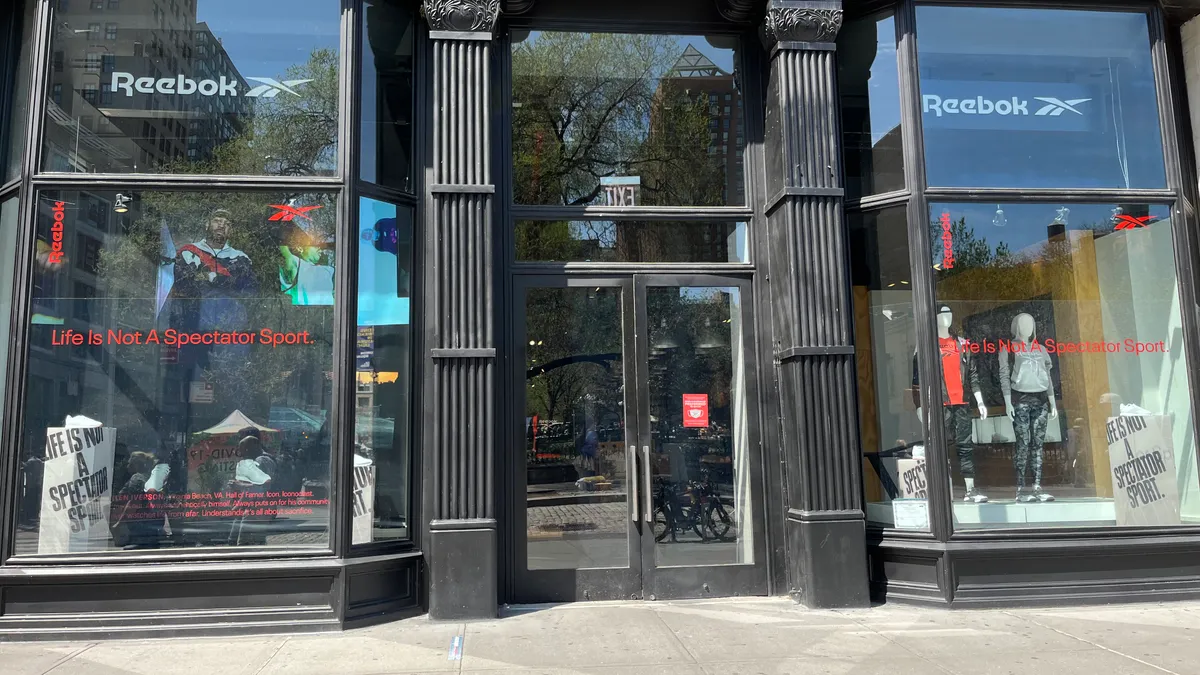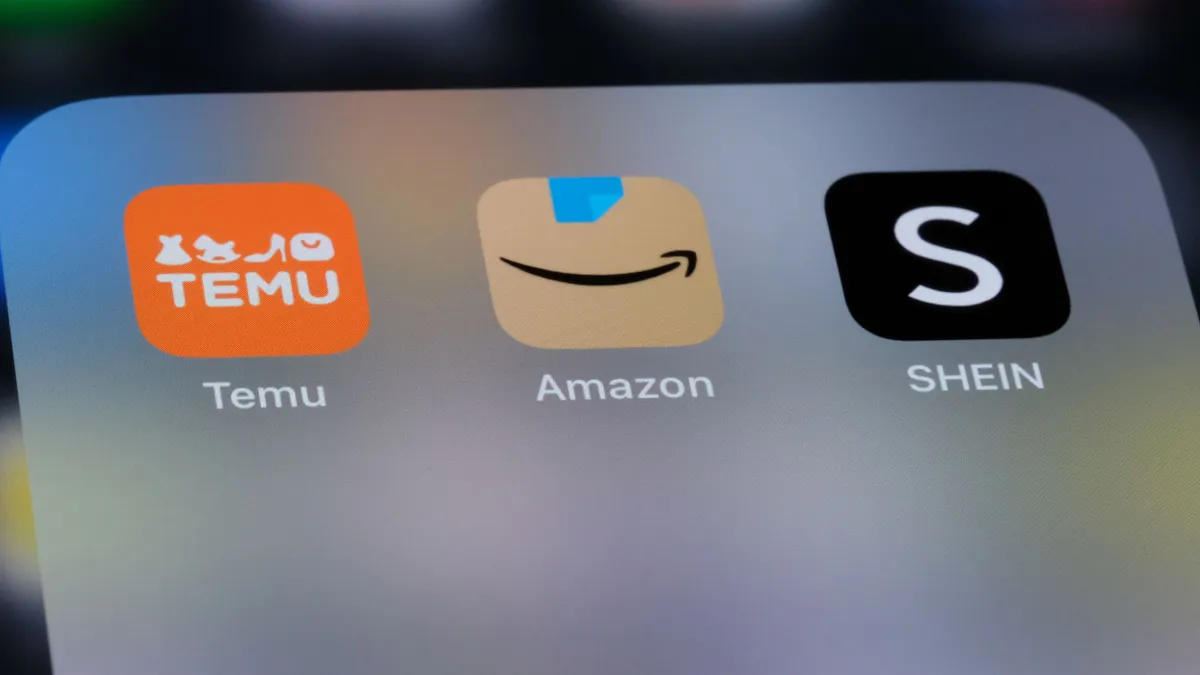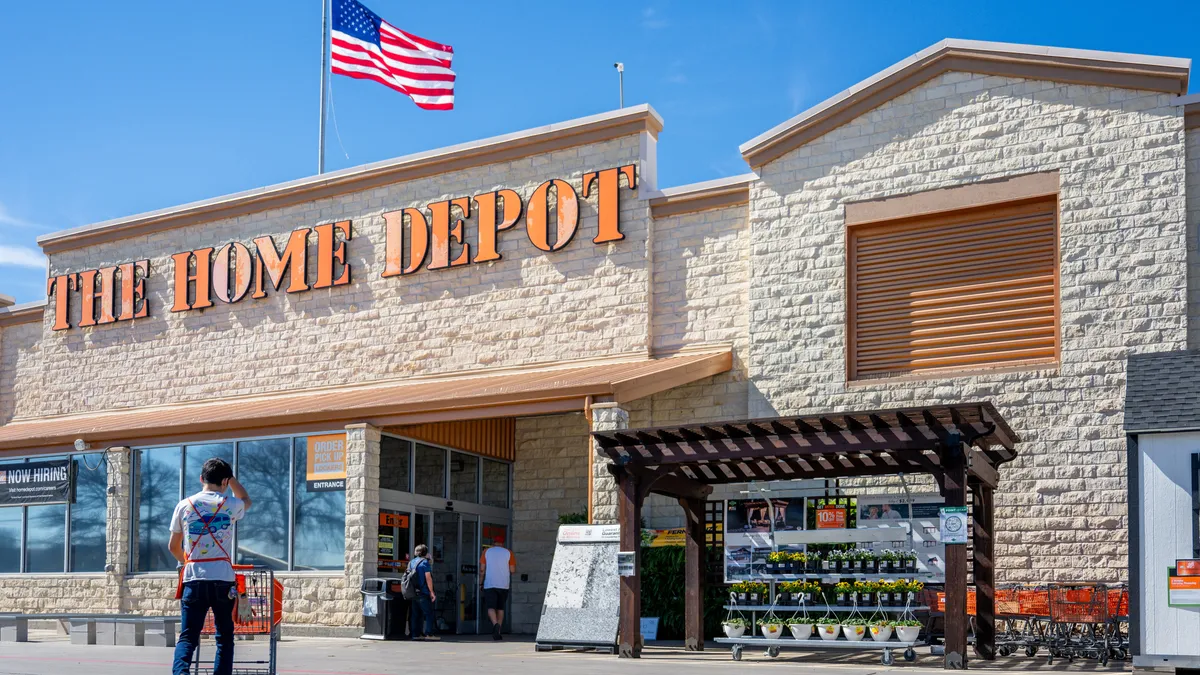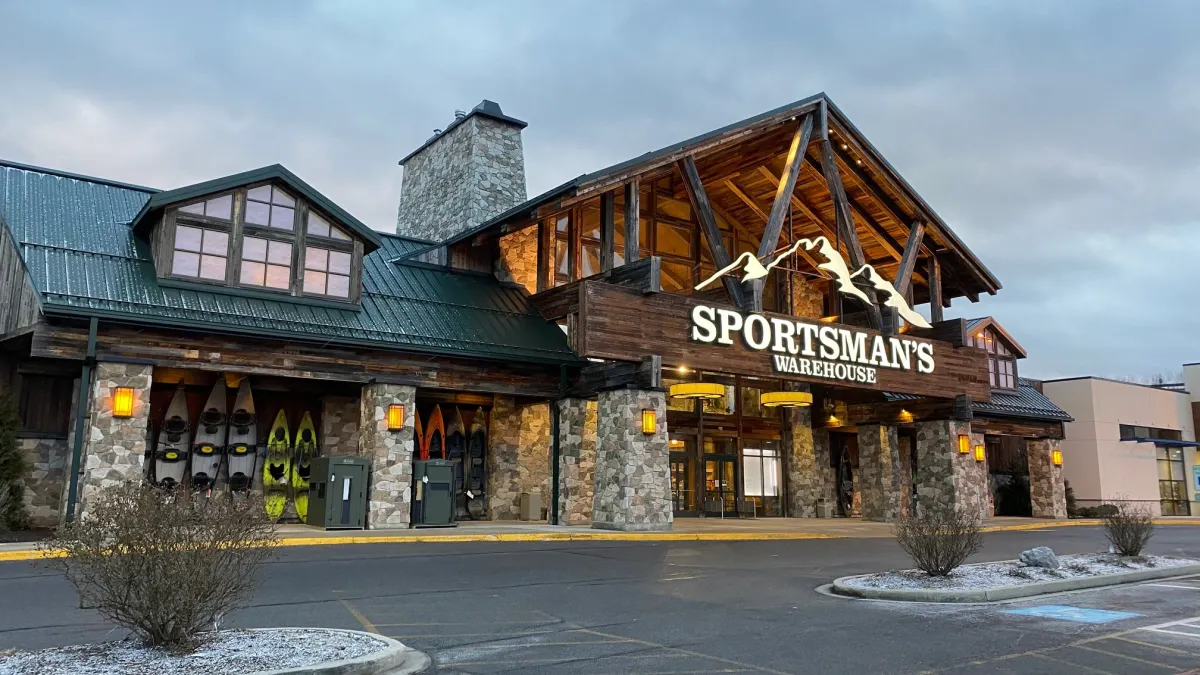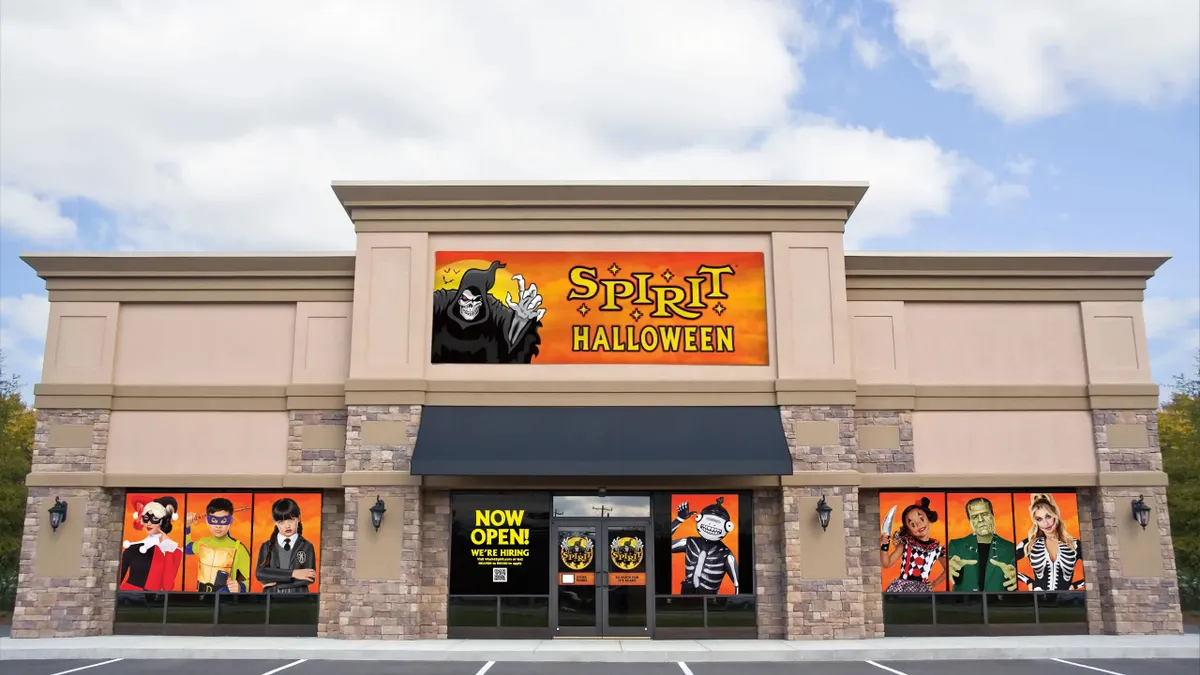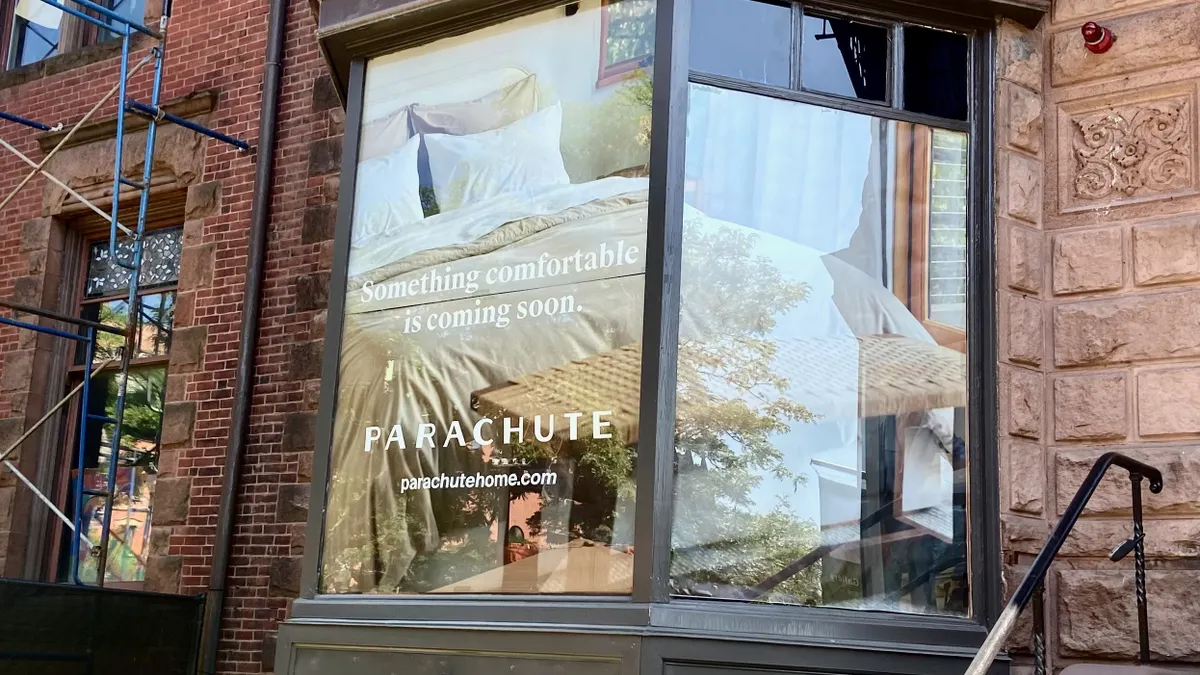Reebok is far from its heyday. A brand that once rivaled Nike, Reebok in fiscal 2020 made just $1.6 billion, about $35 billion less than the sportswear giant. Granted, Nike also makes about double its nearest competitor, Adidas.
There are a host of reasons for Reebok’s decline over the years, not least of all that the brand was housed under a company it was directly competitive with. In March, however, Reebok’s destiny switched hands as Authentic Brands Group closed on its acquisition of the company. Longtime Reebok executives and supporters see the sale as an opportunity for Reebok to reclaim some of its previous clout. But it’s been a long time since Reebok’s prime.
“Reebok itself, while I think the people there are extremely competent, has not been in growth mode for a long time,” Matt Powell, senior industry adviser for sports with the NPD Group, said. “And moving from slow growth to fast growth is jarring.”
Reebok has been set free from the confines of its ownership by Adidas. But it also has a lot of baggage from years of narrowing its focus away from the sports generalist it once was. Much of the language around the acquisition has focused on returning Reebok to its former glory, on allowing the brand to be itself. At the close of the deal, ABG CEO Jamie Salter proudly proclaimed it was “time to let Reebok be Reebok.”
It’s a sentiment that’s been echoed across many people invested in Reebok’s future. Paul Litchfield, who developed Reebok’s Pump basketball shoe, cautioned against Reebok trying to be Nike or Lululemon as it pursues growth once more. He told Retail Dive last year that while he believes Reebok could make its way back to the top spot in the sportswear world, that won’t happen if it’s trying to be someone else. “We can be Reebok pretty good,” Litchfield said.
The question of what it means for Reebok to be Reebok is perhaps longer to answer, though. A struggle for brand identity was one of the defining challenges Reebok faced in its decline. To Matt O’Toole, president of Reebok, it means that Reebok shouldn’t try to emulate anyone else. There can be pressure on smaller businesses to copy what other big brands are doing, but O’Toole wants Reebok to avoid that.
“I think that if you look back at Reebok’s history, when we've been at our best, it's when the brand really was living at that intersection of sport and style,” O’Toole said.
The company’s focus now will be on returning to that positioning as an everyday sports brand and otherwise drawing on its past to inform the future. That includes re-adopting the motto, “life is not a spectator sport,” which the company first used in 1984.
“Expect a lot of the things that have made Reebok successful in the past,” O’Toole said.
‘We have a rightful position’ in basketball
So what made Reebok successful in the past? The company skyrocketed to fame in the ’80s thanks to its Freestyle aerobics shoe for women and became a well-known player in basketball via the Pump and brand ambassadors like Shaquille O’Neal and Allen Iverson. At one point, Reebok held licenses with the NBA, the NFL, the NHL and the MLB.
Cem Bahadir, an assistant professor of marketing at UNC Greensboro, recalls a pair of Reeboks being his very first basketball shoes growing up. “I was so proud. It was like the thing to have back then,” Bahadir said.
Now, Nike dominates the athletics market, with revenue that’s tens of millions of dollars above its nearest competitor, Adidas. Many analysts attribute that to Nike’s success in the U.S., which accounts for about 39% of the company’s total revenue. North America as a whole accounts for 41% of Nike's revenue. For Adidas, the North American market is 24% of revenues.
On a recent trip to New York City, Bahadir noted that out of all the sportswear stores he walked by, Nike’s was the only one with a never-ending line.
“That's the reality of the U.S. market,” Bahadir said. “And in other places, I'm sure Adidas, Puma and probably Reebok are doing better. But the way I see it, especially for a category like basketball, the brand has to do well in the U.S. And that's not impossible, but it will require a significant amount of financial resources and really convincing deals.”
For now, Reebok is doubling down on the categories it’s already in, including fitness and training, with O’Toole describing the brand’s top priority as growing market share in its current businesses. But as “one of only a few truly global sports brands,” O’Toole sees expansion ahead.
“We have a rightful position, if you will, in the basketball space that we want to continue to capitalize on,” O’Toole said. “We just signed a new partner in Myles Garrett on the football side that we're excited about his ability to continue to drive our training business. But I think this is just the beginning of an expanded roster of partners for the brand.”
Garrett will “bring new energy” to Reebok’s classics, running, cross-training and heritage basketball categories, the company said in a release. In particular, Reebok said the athlete would represent products like the Classic Leather, Nano, Floatride, Question and Pump.
And actually, much of the brand’s strategy revolves around bringing back iconic styles and freshening them up with collaborations or other twists.
“There are always, within a brand, products that do an outsized portion of the business — and I think the focus will be on those items,” Powell said.
Classic and retro products are the things that are working best for Reebok currently, Powell added, which is something the brand was held back from doing at Adidas. The brand has seen glimmers of hope in the past year, with Reebok sales in the U.S. footwear market surging 60%, per NPD data.
“The Reebok business remains really good. They are one of the hottest brands in the market right now,” Powell said. “And the guardrails, shall we call them, that Adidas put up around what Reebok could make and not make are off. So Reebok can really make anything they want today.”
The question around Authentic Brand’s strategy is how much they want to invest at once. Rather than immediately trying to restore Reebok to its global sports brand status, a more feasible strategy would be to focus on one or two areas, rebuild the brand, and then expand into others, according to Bahadir, who has expertise in brand management and M&A transitions.
“If you're going to go after that kind of success, you need a lot of financial resources to back it up,” Bahadir said. Better to build success in one area, “and then if things go well, then we can dream bigger in terms of going back to our strong positioning globally.”
Expanding distribution with 'the big dogs'
Much of Reebok’s story is now defined by Authentic Brands and its strengths. The brand management firm has so far focused its attention on lining up a series of operating partners for Reebok across the globe, which O’Toole believes will help fuel its global business.
“A lot of times if a brand like ours was on our own, we might be saying, ‘Hey, let's really focus on China right now, or let's really focus on Brazil right now,’” O’Toole said. “But because of the operating model setup, we can really have a multi-pronged attack, because we're using these local companies who have the in-market expertise to really bring the product and marketing stories to life.”
In the U.S., Authentic Brands tapped Sparc Group, its joint venture with Simon Property Group, to lead operations for Reebok. Sparc owns retailers including Eddie Bauer, Lucky Brand and Brooks Brothers, and by December the company operated in 1,600 doors.
In early May, the brand made a deal with Macy’s to sell an expanded apparel assortment. Fellow department store J.C. Penney has lately been a favorite for some of Authentic Brands’ other properties.
“Do you want to have some flagships in major cities like all the other brands do? I could see that as part of the strategy. But then that would mean that ABG now has to be a retailer. That's not necessarily their core competency.”

Matt Powell
Senior Industry Adviser for Sports with the NPD Group
So far, Reebok’s wholesale deals — much like its product strategy — have been focused on the big names. In addition to Macy’s, the brand expanded its partnership with JD Group, which operates Finish Line, JD and other major banners in North America and Europe. Reebok also deepened its relationship with Foot Locker, and Nike’s shift away from that retailer opens up what Powell estimates is about a billion dollars in sales.
“All of a sudden, Reebok could become a significant player in a very short period of time,” Powell said. “Even if they're not in a large number of retailers, the fact that they're in some of the biggest retailers I think gives them a chance to really shine, so the landscape could change very quickly.”
Keeping the universe of wholesalers small is important, as it gives Reebok’s partners a sense of exclusivity, Powell noted.
“Could there be another dozen? Sure. But I don't think there will be hundreds,” Powell said of future wholesale partners. He added that Reebok is, “really going with the big dogs here. And I think that, again, that's a smart play because they represent such a huge portion of the overall industry. But I do think it will limit how much they can do with other retailers.”
In Europe, the company has teamed with New Guards Group, which is owned by Farfetch, to run its European operations and lead another potential growth spot: luxury collaborations. Previous collaborations, including with the likes of Maison Margiela, Victoria Beckham and Kerby Jean-Raymond (who was Reebok’s head of creative direction until the acquisition, and left around the same time as 150 layoffs took effect) have worked well for Reebok in the past, according to O’Toole.
Noticeably missing from Reebok’s strategy is DTC. Reebok has had success in its digital channels recently, with about 30% of 2021 revenue originating there, and O'Toole sees an opportunity for Reebok to learn from Sparc’s DTC expertise. However, he also emphasized that much of Reebok’s potential lies in wholesale. Although Reebok does currently run a fleet of physical stores, Powell doesn’t see the company opening up many more under Authentic Brands.
“Do you want to have some flagships in major cities like all the other brands do? I could see that as part of the strategy. But then that would mean that ABG now has to be a retailer. That's not necessarily their core competency,” Powell said.
That being said, companies like Authentic Brands represent a new way to do business in retail — and that may not be a bad thing for Reebok.
“We've had this sort of archaic model that's been around for 100 years of: Brands make products and sell them to retailers and market the product directly to consumers, but count on a retailer to be the intermediary,” Powell said. “And, you know, maybe that model is broken.”
Can a ‘distress’-focused brand management firm help Reebok grow?
One thing that sticks out about Authentic Brands’ ownership of Reebok is that Reebok is far from its usual acquisition. The company’s portfolio consists of a variety of players that have filed for bankruptcy in recent years, including Barneys New York, Forever 21, Aéropostale, Brooks Brothers and Lucky Brand. Authentic Brands’ objective is to grow these brands by “partnering with best-in-class manufacturers, wholesalers and retailers.”
Reebok struggled under Adidas, especially because of the competitive nature of the two companies, but it is not a distressed brand in the same way some of Authentic Brands’ other acquisitions were. Growing Reebok will require a different approach.
“I think one of the Achilles’ heels for a lot of these brand management companies is their ability to market the brand effectively. This is the first really thriving brand that ABG is taking on,” Powell said. “Most of the other brands that they purchased were brands that were under some distress or maybe past their due date altogether. And a thriving brand like Reebok is going to require marketing and part of marketing today is celebrity endorsement kinds of deals. So will they continue? I don't know. Should they? Yes.”
Another challenge will be managing supply and demand. Decades ago, one of the obstacles in Reebok’s growth was releasing too much product for some of its most anticipated launches. Authentic Brands will have to avoid making that same mistake, Powell said.
“It was a great brand at some point in time, right? And my sense is that for the employees and many of the consumers, it is not anymore.”

Cem Bahadir
Assistant professor of marketing at UNC Greensboro
The industry won’t know the true impact of Authentic Brands on Reebok for some time now. Powell estimates that product from the new arrangement will start coming out in the second half of the year or possibly early 2023. In some ways, the acquisition will be simpler to execute on since Authentic Brands is a brand management firm versus another retailer like Adidas. Still, it could take two to three years to truly be able to see market outcomes from the changes Authentic Brands makes, according to Bahadir. That timeline could be even longer if Authentic Brands adopts a particularly bold strategy.
“They have some form of a format in mind in terms of how they're going to manage this brand,” Bahadir said. “And the big question is, will this work for Reebok or not?”
There are some important questions for Authentic Brands to answer as it plots out a strategy for the brand. Does Reebok want to be a sports generalist once again? Should Reebok pursue competitive categories like soccer and basketball, which have strong brand equity from larger players, or stick to growth in smaller markets?
For the long-term, ambitious goals are probably good. For the short-term, it may be more important to instill a sense of possibility in the brand.
“It was a great brand at some point in time, right? And my sense is that for the employees and many of the consumers, it is not anymore,” Bahadir said. “So to me, starting at a space where we can get rapid success would be the priority. Bringing back the feeling of success for the brand and the employees and the managers and the people involved with the brand could be a great start.”



